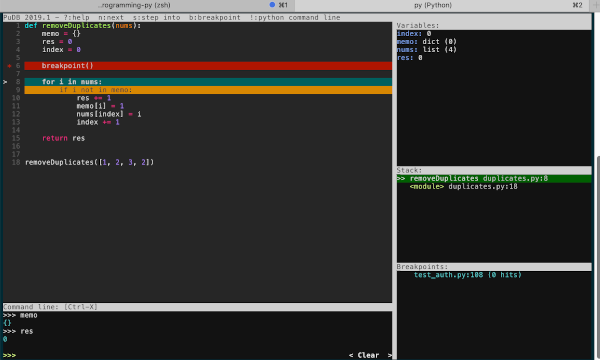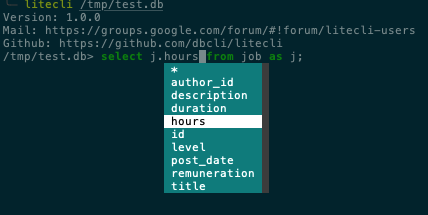Blog Posts
Alembic Operations
Jan 24th, 2020Debug Python With Pudb
Jan 17th, 2020Coding Challenge Array Exercises
Jan 10th, 2020Coding exercises are hard, no matter what level of experience you have and which point of your career you are at, it is a very different skills to succeed coding exercises versus building real life application. Nonetheless some of them are quite interesting and highlight techniques that can vastly change the performance of a program. In today’s post we look at optimization techniques used in arrays on common problems.
How To Change Wsl User Password
Jan 3rd, 2020Jenkins Shared Libraries
Dec 27th, 2019When we have multiple pipelines in Jenkins, it becomes necessary to share code between them. For example, we might want to have a stage that we want to setup for a different environment therefore the only change needed would be its parameters. Today we will see how we can provide reusable functionalities in Jenkins pipeline across a single or multiple pipelines.
Embedded Static Pages Library
Dec 20th, 2019Covariance And Contravariance
Dec 13th, 2019Sqlite Litecli
Dec 6th, 2019SQLite comes built in with a command line tool allowing us to execute all sorts of database commands (DDL/DML) but also special dot commands allowing us to list the tables or check the schemas. Being low level by nature, it provides opportunities for application to be built on top of. LiteCLI is an example of a friendly CLI for SQLite. Today we will look at the feature that LiteCLI provides making it a great companion for your SQLite application.
Setup Prettier For Typescript
Nov 29th, 2019One thing making developers life easier is automatic code formatters. Prettier is one of the most famous code formatter, for most part it does what you would expect it to do and most of the time it formats code in a better way you would yourself do. But on top of making your life easier by formatting your own code, it can be used to enforce a convention in term of code formatting accross your team. One of the language supported is Typescript as we will see today.
Aws Ip Range Cidr
Nov 22nd, 2019AWS EC2 security groups rules allow us to give access to EC2 instances on certain ports and certain IP addresses. While ports and address are easy to setup, the rules also support CIDR notation which provides a way to specify a rule for a range of addresses. Today we will see how CIDR notation works and how we can use it do define IP ranges.
Zsh Plugins
Nov 15th, 2019Iterm2 With Oh My Zsh
Nov 8th, 2019Few years ago I wrote a post about ConEmu, a better shell experience for Windows. I have been using it over the past four years while working on Windows. Recently I completely moved to Mac and on unix system we have better shell experience in general. Today we will see how we can setup iTerm2, with zsh and Oh My Zsh providing a way superior shell experience than ConEmu on Windows or even than the regular terminal.
Feature Reducer With Ngrx
Nov 1st, 2019Just like how Angular components, ngrx stores can also be separated into different modules. This has the benefits of reducing the complexity of a system by having dedicated modules with dedicated reducers, actions and effects. Today we will see how to define ngrx reducers, effects and actions for feature modules.
Serialization With Marshmallow
Oct 25th, 2019Marshmallow is a library converting different datatypes to Python objects. The most common usage of Marshmallow is to deserialize JSON object to Python object or serialize Python object to JSON object to be used in web API. Marshmallow does this through the definition of a schema which can be used to apply rules to validate the data being deserialized or change the way data are being serialized. Today we will look into more details on how to use Marshmallow, how to apply validation on fields and how to configure
Get Started With Alembic
Oct 18th, 2019In a previous post, I covered Flyway, a database migration tool which allows us to apply incremental migration to an existing database or build the new database from scratch. In the same line, Alembic is a migration tools which uses SQLAlchemy underneath, ideal when our application itself is in Python. Today we will look at how to setup Alembic and create migrations.
 chrome
chrome
 cypress
cypress
 dbeaver
dbeaver
 ethereum
ethereum
 figma
figma
 flask
flask
 git
git
 graphql
graphql
 jekyll
jekyll
 jenkins
jenkins
 js
js
 maths
maths
 metamask
metamask
 mobx
mobx
 mysql
mysql
 oas
oas
 postgres
postgres
 postman
postman
 puml
puml
 python
python
 solidity
solidity
 splunk
splunk
 sqlalchemy
sqlalchemy
 sqlite
sqlite
 typescript
typescript
 unicode
unicode
 vscode
vscode
 zsh
zsh


